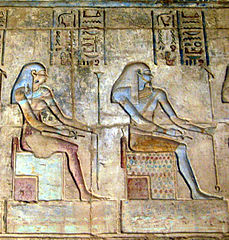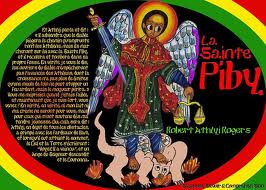Now it’s all systems go to KMT.
Better to reconnect with the God (NTR, ntr, neteru, NTRW, gods, goddess) you knew from ancient times, than to cling to the new God that cursed and continue to curse you.
In the beginning, God summoned all the lesser gods, asking each in turn what they could provide for mankind who were about to be made. They all replied; with the Sun saying ‘I will shine upon them in the day time, the Moon promised to give light after. Saturn offered Penal Justice and Necessity. Jupiter offered peace for them so they would not be utterly destroyed by wars. Mars said he was already father of Struggle, Anger and Strife. Venus offered Love, Pleasure and Laughter. Mercury offering Intelligence
said “I will make known to them the truth and confer wisdom on them. Continue reading

 THE RELIGION OF ANCIENT EGYPT
THE RELIGION OF ANCIENT EGYPT THE RELIGION OF ANCIENT EGYPT
THE RELIGION OF ANCIENT EGYPT Heh and Hauhet, Deities of Infinity and Eternity
Heh and Hauhet, Deities of Infinity and Eternity



 Two ivory Djed pillars found in a
Two ivory Djed pillars found in a The Djed-pillar
The Djed-pillar ,[1] is an ancient symbol for stability and endurance. It is mentioned in the Pyramid Texts of the Old Kingdom:
,[1] is an ancient symbol for stability and endurance. It is mentioned in the Pyramid Texts of the Old Kingdom: DESCRIPTION OF THE PAPYRUS OF NAS-KHEM, PRIEST OF AMEN-RA
DESCRIPTION OF THE PAPYRUS OF NAS-KHEM, PRIEST OF AMEN-RA DESCRIPTION OF THE PAPYRUS OF NAS-KHEM, PRIEST OF AMEN-RA
DESCRIPTION OF THE PAPYRUS OF NAS-KHEM, PRIEST OF AMEN-RA









Recent Comments